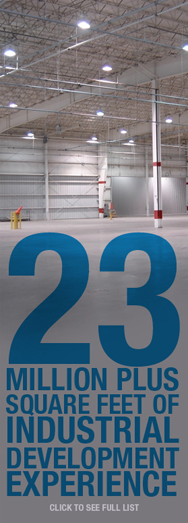Prudential Releases a Positive CRE Report
Great article from The Oakstone
One of the industry’s closely watched “status checks” (and one I’ve been watching for years) points to a fairly positive outlook for U.S. commercial real estate in the months ahead. The quarterly report from Prudential Real Estate Investors (PREI) also details potential hiccups, including rising interest rates, so it’s well worth a read.
Here is an executive summary of Prudential’s report:
• With the economy growing at a healthy pace, commercial real estate fundamentals are finally moving in a positive direction in all sectors. Fears of a double-dip recession have mostly abated, although turmoil in the Middle East and the disaster in Japan are reminders that exogenous events are always lurking. Questions remain as to how strong the recovery will be and how long it will take the space markets to fully recover from the recession.
• The momentum should continue in the apartment and hotel segments, which bottomed a year ago, due to increased demand for rental units and rising travel. Fundamentals are just shifting to positive in the office, retail and warehouse sectors. Gains in those property types are bound to be inconsistent based on the market and segment.
• Capital continues to flow to commercial real estate, particularly “prime” assets in “gateway” cities. Acquisition yields in a handful of core markets have been reduced to historically low levels. Transaction activity is up about 50% from a year ago and should reach 2004 levels.
• Looming over the market is the prospect of rising interest rates. That would increase the cost of capital and likely push acquisition yields higher, which could impact property values. However, to the extent that rising rates are a harbinger of a stronger economy, upward pressure on capitalization rates could be moderated by increasing risk appetite and expectations of higher income.
• Availability of debt capital is strong and expanding. CMBS programs, insurance companies and the largest banks are lending at a healthy level for stable properties. Debt is scarcer for properties with leasing issues, although an increasing number of specialty lenders are looking to fill that niche. The volume of loan resolutions is growing as banks get healthier, but the pool of overleveraged loans that are being extended rather than refinanced remains massive.
• After two strong years of appreciation, REIT stocks are relatively pricey, but there is upside if earnings growth is robust. Access to capital is once again a strong point for REITs, which are on pace to raise more than $50 billion of debt and equity for a second straight year. REITs are looking to use that capital for growth through property purchases and mergers. The first quarter alone produced $26.4 billion of announced M&A activity, which already makes it one of the most active years in industry history.
Click here for the full PREI report. Happy reading

